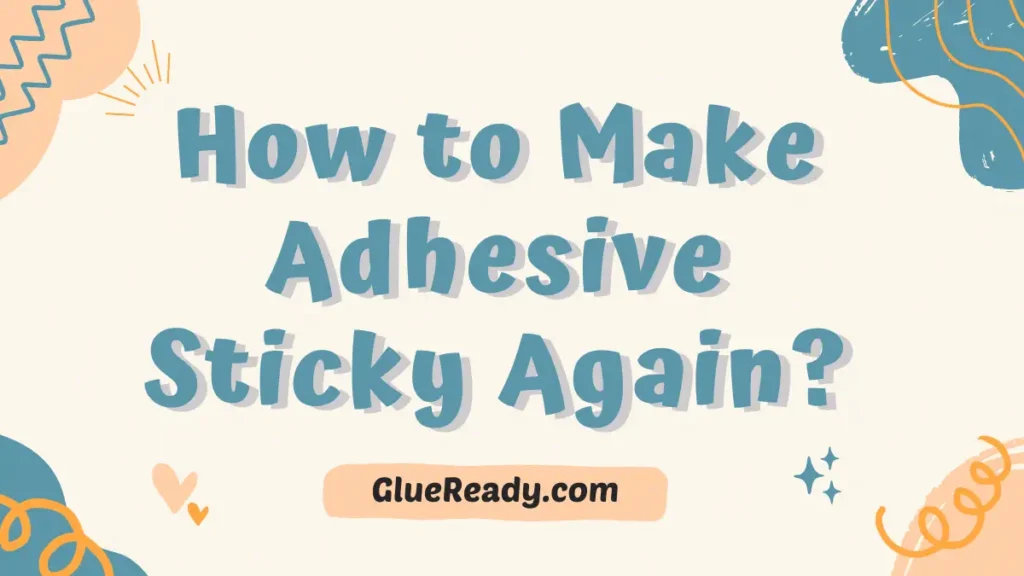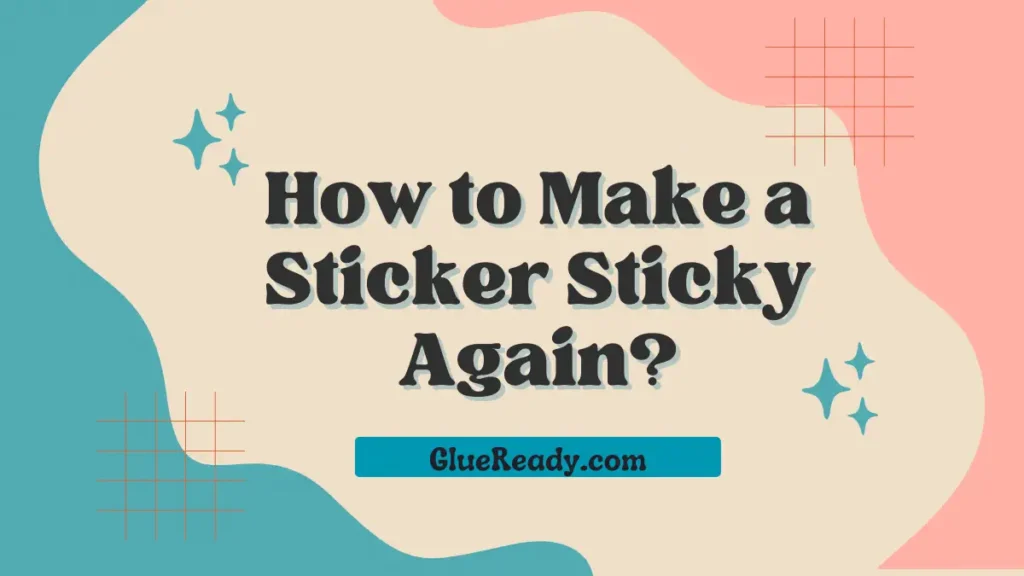How to Use Spray Adhesive on Fabric Effectively?

Spray adhesive is a convenient and versatile product that can bond fabric to fabric or other surfaces without sewing or stapling. It’s ideal for projects where you want a quick and easy attachment, such as appliques, quilts, or upholstery.
However, using spray adhesive on fabric requires some care and preparation to ensure a successful result. Here are some tips and tricks on how to use spray adhesive on fabric effectively.
Is Spray Adhesive Good for Fabric?
Spray adhesive can be good for fabric depending on the type of project and the quality of the product. Spray adhesive can cover large areas quickly and bond fabric to fabric or other materials without sewing or stapling.

What You Need to Use Spray Adhesive on Fabric?
Before you start, make sure you have the following items:
- Spray adhesive designed for fabric. Not all spray adhesives are suitable for fabric, so check the label before buying.
- Fabric pieces that you want to bond. Make sure they are clean and free of dust, lint, or grease. If they are wrinkled, iron them first.
- Use scissors or a rotary cutter to cut out your shapes.
- A pencil or a marker to trace your shapes if needed.
- For measuring fabric pieces, you need a measuring tape or a ruler.
- To prevent overspray from reaching your work surface, need newspapers or a drop cloth.
- A well-ventilated and dust-free area to work in.
How to Use Spray Adhesive on Fabric?
Follow these steps to use spray adhesive on fabric effectively:
Step 1: Choose the Right Spray Adhesive
Look for a spray adhesive specifically labeled for fabric or one that mentions its compatibility with fabric materials. To ensure the product is appropriate for your project, read the label and instructions.
Step 2: Prepare Your Workspace
Choose a well-ventilated area or consider working outdoors to avoid inhaling any fumes. Lay down a protective covering on your work surface, such as a drop cloth or old newspapers, to prevent any adhesive from reaching and damaging your working area.
Place your fabric piece face down on the protected surface. If you are using paper-backed fusible webbing, peel off the paper backing first.
Step 3: Test the Adhesive
Before applying spray adhesive directly to your fabric project, it’s advisable to conduct a small test on a scrap piece of fabric. This will allow you to see how the adhesive behaves on your specific fabric and make sure it doesn’t discolor or damage the surface.
Follow the instructions provided with the adhesive for the test. Also, ensure that the fabric you are working with is clean and free from dust, lint, or any other particles that may interfere with the adhesive’s bond.
Step 4: Prepare the Fabric
Ensure that the fabric you are working with is clean and free from dust, lint, or any other particles that may interfere with the adhesive’s bond.
Any dirt or residue can be removed by gently washing or wiping it down with a lint-free cloth. Allow the fabric to dry completely before proceeding.
Step 5: Apply the Adhesive
Hold the spray adhesive can approximately 6 to 8 inches away from the fabric surface. Start by applying a light, even coat of adhesive to one side of the fabric.
It’s important not to oversaturate the fabric to avoid any seepage or wrinkling. If you need to cover a larger area, work in small sections, applying the adhesive gradually.
Adjust the distance and the pressure as needed to get the right amount of glue. Once you have the right amount of glue, apply it evenly over the entire surface of the fabric in circular and back-and-forth motions.
Step 6: Bond the Fabrics
Once the adhesive is applied, carefully position the fabric onto the desired surface or onto another fabric piece. Take your time to align the edges and smooth out any wrinkles or air bubbles.
Press the fabric down firmly to ensure a good bond. If necessary, use a rolling pin or your hands to gently apply even pressure across the fabric.
Step 7: Allow Proper Drying Time
Although drying time can vary depending on the specific adhesive, you can wait for about 15 minutes for the glue to dry and set before proceeding.
The drying process can be sped up with a hair dryer, but be careful not to overheat the glue or the fabric.
Step 8: Clean Up
After you’ve completed your project, it’s important to clean up any adhesive residue. Use a suitable adhesive cleaner or follow the manufacturer’s recommendations for removal.
Be careful not to damage the fabric with harsh chemicals. Wipe away any excess adhesive carefully, taking care not to smear it further into the fabric.
Tips And Tricks for Using Spray Adhesive on Fabric
Here are some additional tips and tricks on how to use spray adhesive on fabric:
- Always check the performance of the spray adhesive on a scrap piece of fabric and see how it affects the color and texture of the fabric.
- When using spray adhesive, use gloves and a mask to protect your skin and lungs from the fumes.
- Work in a well-ventilated area and avoid inhaling the spray directly.
- Shake the can well before using it and after every few sprays to prevent clogging.
- Clean the nozzle after each use by turning the can upside down and spraying until only air comes out.
- Keep the can away from heat sources and sunlight in a cold, dry location.
- If you get any glue on your skin, clothes, or other surfaces, remove it as soon as possible with soap and water or rubbing alcohol.
What Spray Adhesive is Best for Fabric?
There is no definitive answer to what spray adhesive is best for fabric, as different products may have different features, advantages, and disadvantages depending on the type of project and the fabric involved.
However, based on some online reviews and recommendations, here are some possible options to consider: Aleene’s Spray Pump Fabric Fusion, 3M Super 77 Multipurpose Spray Adhesive, Bostik SuperTak Foam and Fabric Adhesive, Krylon Fabric Fusion Spray Adhesive, Odif Usa 505 Spray and Fix Temporary Fabric Adhesive.
Is Spray Adhesive Permanent?
Some spray adhesives are permanent, while others are temporary or repositionable. Permanent spray adhesives provide a strong and durable bond that is resistant to water, temperature, and other factors.
Temporary or repositionable spray adhesives allow for adjustment or removal of the bonded materials before or after drying.
Can I Use Fabric Glue Instead of Sewing?
For some applications requiring quick fixes or small modifications, such as hemming, basting, applique, or repairing small tears, fabric glue can be used in place of sewing.
Fabric glue is a quick and easy solution that can save you time and hassle. However, fabric glue is not a substitute for sewing, as it may not provide a strong, durable, or flexible bond for some fabrics or purposes.
Fabric glue may also leave hard or visible seams, stain or damage the fabric, or not hold up well in the wash. Fabric glue also requires a long dry time before you can use or wash the glued item.
Read More: How Strong Is Fabric Glue?
Does Fabric Spray Adhesive Wash Out?
It depends on the type of fabric spray adhesive you use. Some fabric spray adhesives are permanent, while others are temporary or repositionable.
Permanent fabric spray adhesives may not wash out completely, even after several washes. Temporary or repositionable fabric spray adhesives may wash out or lose their stickiness over time.
You should always check the product label and instructions to see if the fabric spray adhesive is washable or not.
If you need to remove fabric spray adhesive residue from the fabric, you can try using white vinegar, hot water, and dish soap.
Final Thoughts
Spray adhesive is a handy product that can help you bond fabric to fabric or other materials without sewing or stapling. It’s perfect for projects where you want a quick and easy attachment, such as appliques, quilts, or upholstery.
However, using spray adhesive on fabric requires some care and preparation to ensure a successful result.
By following the above-mentioned steps and tips on how to use spray adhesive on fabric, you can create beautiful and durable projects with ease.






